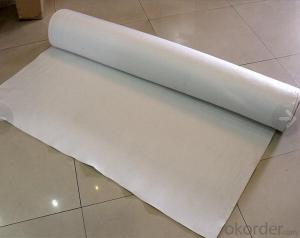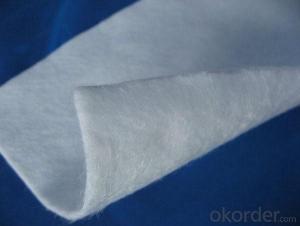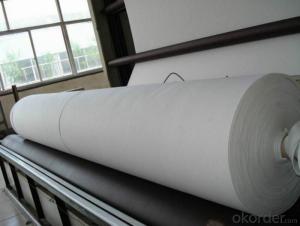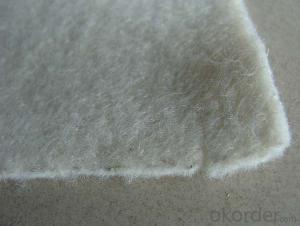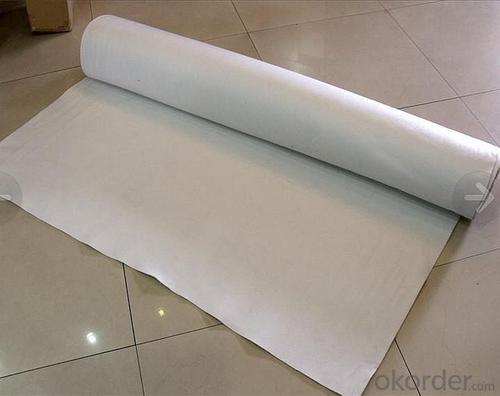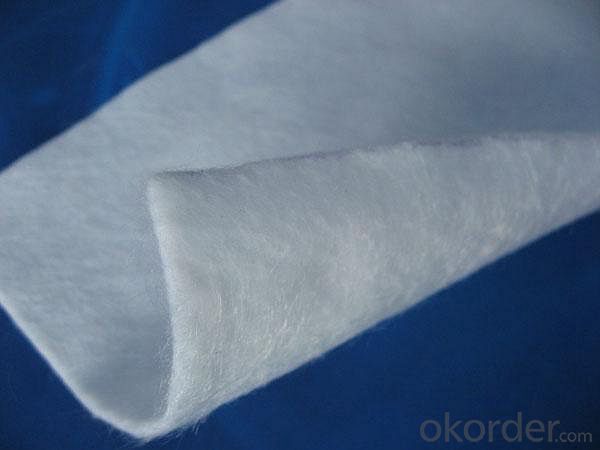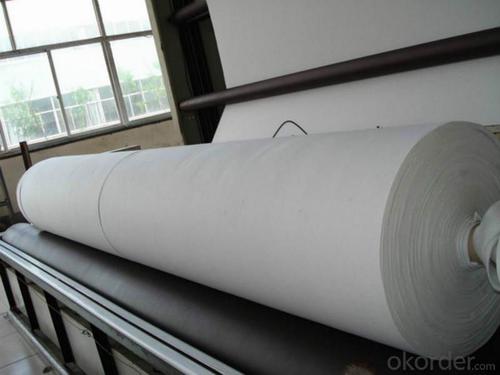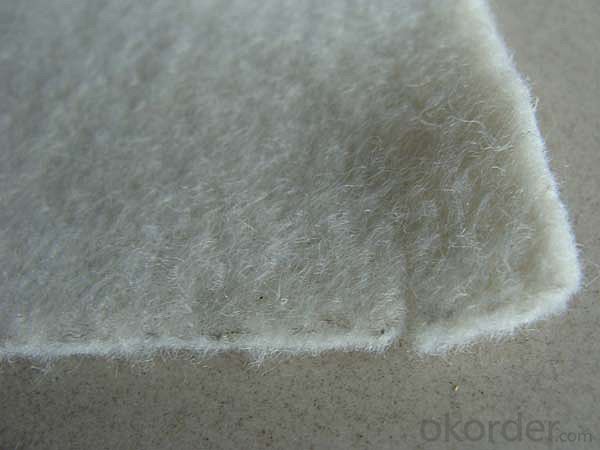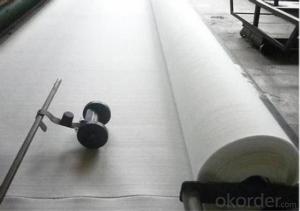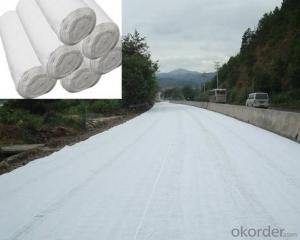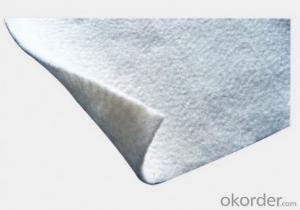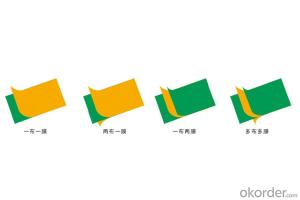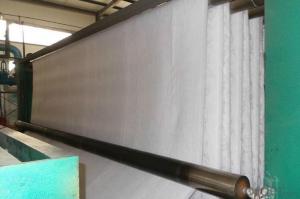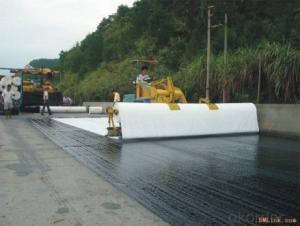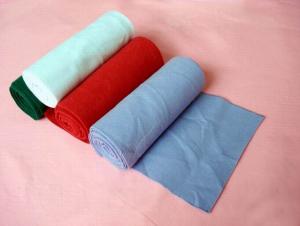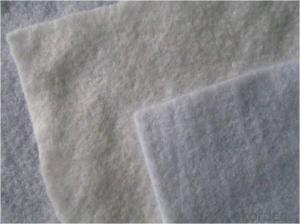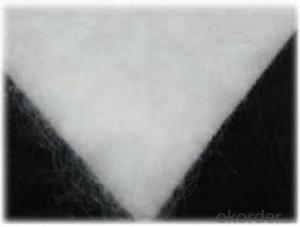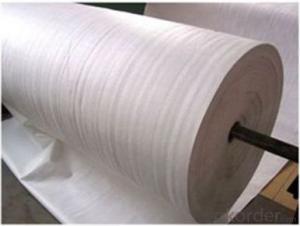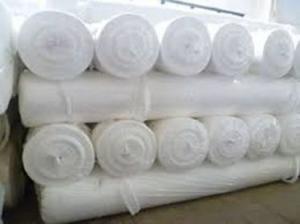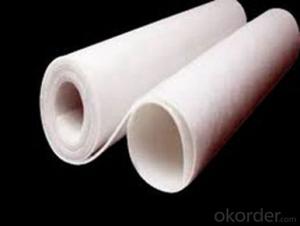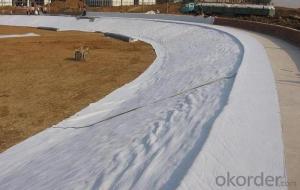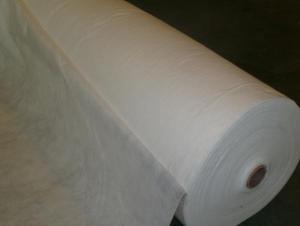PP Geotextile Non Woven Multifilament CNBM
- Loading Port:
- China main port
- Payment Terms:
- TT OR LC
- Min Order Qty:
- 1000 m²
- Supply Capability:
- 1000000 m²/month
OKorder Service Pledge
OKorder Financial Service
You Might Also Like
Product Introduction
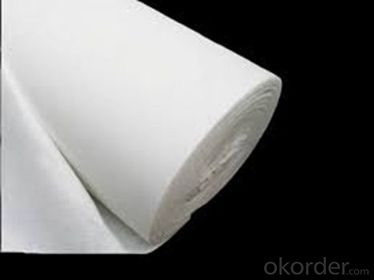
Geotextile Specifications
1) Weight / Mass: 100g/m2-1500g/m2
2) Width: Within 8 m (1m-8m)
3) Length: 50m-100m/roll (as request)
4) Material: PP / PET
5) Color: Black , white , grey and other color
Geotextiles are permeable fabrics which when used in association with soil, have the ability to separate, filter, reinforce, protect or drain.
Geotextile uses:
Filter: Geotextile fabric is an excellent filtering medium as it allows fluid to pass through the fabric yet retains fine particles, as you would see in an aggy drain. Great for wrapping perforated pipes and rock to create a path for fluid to pass though yet keep the fines out. Another large use in Australia is in the construction of a landfill cell, where filter geotextile sits atop the filtration rock separating the waste material placed on top allowing the leachate to pass through down to the liner.
Our Service
1.On a regular basis or as per your request,we entrust national testing agencies to conduct quality inspections
2. Strictly in accordance with the ISO9001-2008 international quality system standard,we monitor and manage the whole process throughout production,quality testing,and measurement to ensure product quality
3. For quality-related construction delay or substandard construction(except for damage or losses due to customer’s responsibility or irresistible natural disasters),we have refunding,replacement,and repair services.We will respond to customers’ feedbacks on quality issues within 24 hours.
FAQ:
Q: What kind of payments does jenor support?
A: T/T, L/C, Cash are accepted.
Q: Do you charge for the samples?
A: Accordeing to our company policy, the samples are free, we only charge the freight fee. And we will return the freight fee during the next order.
Q: Can you produce according to customers' design?
A: Sure, we are professional manufacturer, OEM and ODM are both welcome.
Q: Do you have other products?
A: Yes, please check the pictures:
- Q: What are the benefits of using geotextiles in construction projects?
- Geotextiles offer several benefits in construction projects. Firstly, they provide excellent soil stabilization, preventing erosion and maintaining the integrity of the structure. Secondly, they enhance drainage and filtration, allowing water to flow through while retaining soil particles. Additionally, geotextiles act as a barrier against weed growth, reducing the need for chemical herbicides. Lastly, they improve the overall lifespan and durability of the construction by reinforcing weak areas and distributing loads evenly.
- Q: What are the different geotextile testing methods?
- There are several different geotextile testing methods, including but not limited to, grab tensile strength testing, puncture resistance testing, tear resistance testing, burst strength testing, and permeability testing. These methods help assess the physical properties and performance of geotextiles in various applications.
- Q: Can geotextiles withstand harsh weather conditions?
- Yes, geotextiles are designed to withstand harsh weather conditions. They are made from durable materials that can resist extreme temperatures, heavy precipitation, and UV radiation. Additionally, geotextiles have excellent drainage properties, ensuring they can handle excessive moisture and prevent erosion even in challenging weather conditions.
- Q: How are geotextiles different from other geosynthetic materials?
- Geotextiles are a type of geosynthetic material that primarily functions as a permeable fabric used in various civil engineering applications. Unlike other geosynthetic materials such as geogrids or geomembranes, geotextiles are primarily designed to improve soil stability, filtration, drainage, and erosion control. They are typically made from synthetic fibers and have a textile-like structure, providing strength, flexibility, and high water permeability. While other geosynthetic materials may have different functions such as reinforcement or containment, geotextiles excel in their ability to separate, filter, and reinforce soil, making them unique in the realm of geosynthetics.
- Q: Are geotextiles commonly used in canal lining applications?
- Yes, geotextiles are commonly used in canal lining applications. They provide effective erosion control and filtration, preventing the loss of soil particles and maintaining the stability of canal embankments. Additionally, geotextiles can enhance drainage and reduce seepage, improving the overall performance and longevity of canal lining systems.
- Q: Can geotextiles be used in wetland restoration projects?
- Yes, geotextiles can be used in wetland restoration projects. They are commonly used as erosion control measures to stabilize soil and prevent sediment runoff, which is crucial for the success of wetland restoration. Geotextiles can also help with water filtration and drainage, improving the overall health and functionality of the wetland ecosystem.
- Q: How are geotextiles affected by biological factors?
- Geotextiles can be affected by biological factors such as microorganisms, plants, and animals. Microorganisms can degrade the fabric of geotextiles, leading to reduced strength and durability. Plant roots can penetrate and damage the geotextile, compromising its effectiveness in preventing soil erosion. Additionally, animal burrowing can disturb the placement and integrity of geotextiles, reducing their overall performance. Therefore, biological factors can have a negative impact on the functionality and lifespan of geotextiles.
- Q: What are the installation techniques for geotextiles?
- There are several installation techniques for geotextiles, depending on the specific application and requirements. Some common techniques include trenching, anchoring, and overlaying. Trenching involves excavating a trench and placing the geotextile in the desired location, then backfilling the trench with soil or aggregate. Anchoring involves securing the geotextile to the ground using stakes or anchors, providing stability and preventing movement. Overlaying involves placing the geotextile on top of an existing surface, such as a road or landfill, to provide reinforcement and separation. The choice of installation technique depends on factors such as soil conditions, project specifications, and desired results.
- Q: What is the price of composite geotextile?
- Geotextile is divided into polyester short geotextile, staple acupuncture geotextile, polyester filament geotextile, woven geotextile, filament woven geotextile, and so on. Specifications and different models, the price is also different, composite geotextile weight in the 80-1500g / ㎡ between the quality standards are divided into non-standard, whitening A, Sinochem, the general national standard and so on. The t value is generally between 4900 and 7500 yuan / ton, 187 & lt; 6600 & lt; 5604
- Q: How do geotextiles contribute to the environmental sustainability of construction projects?
- Geotextiles contribute to the environmental sustainability of construction projects by providing various benefits. They act as a barrier between the soil and construction materials, preventing erosion and sedimentation. This minimizes the release of pollutants into water bodies, thus protecting water quality. Geotextiles also help in stabilizing slopes and retaining walls, reducing the need for additional materials and resources. Moreover, they enhance soil drainage, reducing the risk of flooding and soil erosion. Overall, geotextiles promote sustainable construction practices by minimizing environmental impacts and preserving natural resources.
Send your message to us
PP Geotextile Non Woven Multifilament CNBM
- Loading Port:
- China main port
- Payment Terms:
- TT OR LC
- Min Order Qty:
- 1000 m²
- Supply Capability:
- 1000000 m²/month
OKorder Service Pledge
OKorder Financial Service
Similar products
Hot products
Hot Searches
Related keywords
